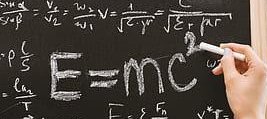Unlocking Progress in Mathematics

4th October 2025
Mathematics is not just about numbers — it’s about problem-solving, logical thinking, and resilience. Every step forward matters, whether it’s mastering exam questions or tackling a tricky puzzle. This follow-up edition brings you last week’s puzzle solutions, fresh challenges, and some reminders on how to keep the momentum going strong!
Solutions to Last Week’s Puzzles
Puzzle 1: A farmer has 17 sheep. All but 9 ran away. How many are left?
Answer: 9
Puzzle 2: Two consecutive integers whose product is 420.
Answer: 20 and 21
Puzzle 3: The smallest positive number that leaves remainder 3 when divided by 7 and remainder 1 when divided by 5.
Answer: 31
Keep the Momentum Going!
Mathematics is a journey of steady progress. Every problem solved sharpens your thinking and builds confidence for the next challenge. Parents, your encouragement makes all the difference, and students, your effort today is an investment in tomorrow’s success. Keep practising, stay curious, and celebrate every breakthrough — big or small!
Puzzle Zone – New Challenges
Challenge your mind and see if you can solve these before the next edition!
Puzzle 1:
I am a three-digit number. My tens digit is five more than my ones digit, and my hundreds digit is eight less than my tens digit. What number am I?
Puzzle 2:
A clock shows the time as 3:15. What is the angle between the hour and the minute hand?
Puzzle 3:
The sum of three consecutive odd numbers is 219. What are the numbers?
Puzzle 4:
A rectangular garden is 15m long and 10m wide. If a path of uniform width is built inside the garden around the edges, and the area of the remaining garden is 96 m² less than the original, what is the width of the path?
Fun Maths Facts
The word “mathematics” comes from the Greek word mathema, meaning “knowledge” or “learning.”
- A palindrome number reads the same forwards and backwards (e.g., 12321).
- The Fibonacci sequence appears in nature — from sunflower seeds to seashell spirals.
- The number π (pi) has been calculated to over 62 trillion digits, but only a few are needed in real-world calculations.
Mathematics Team




